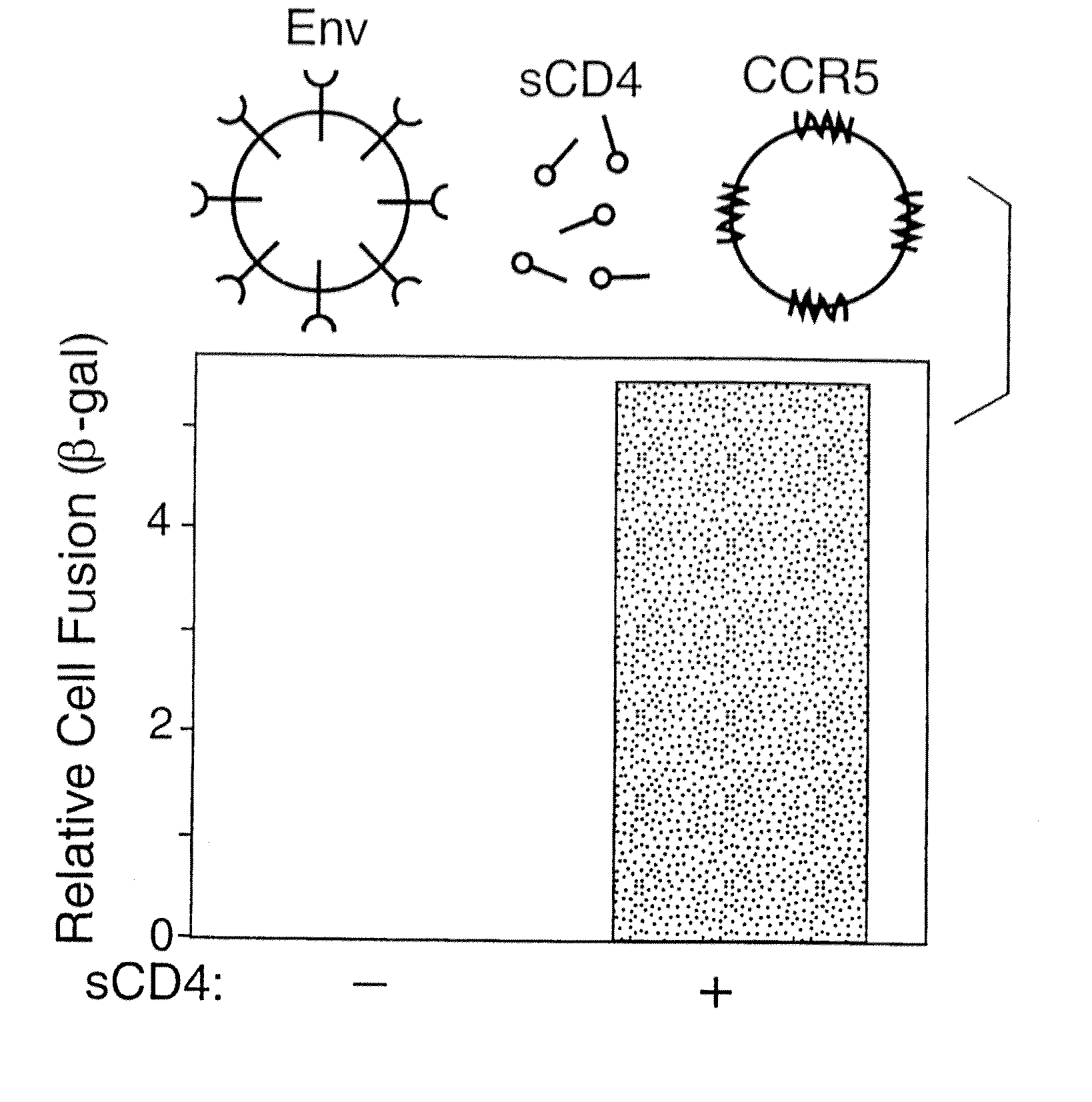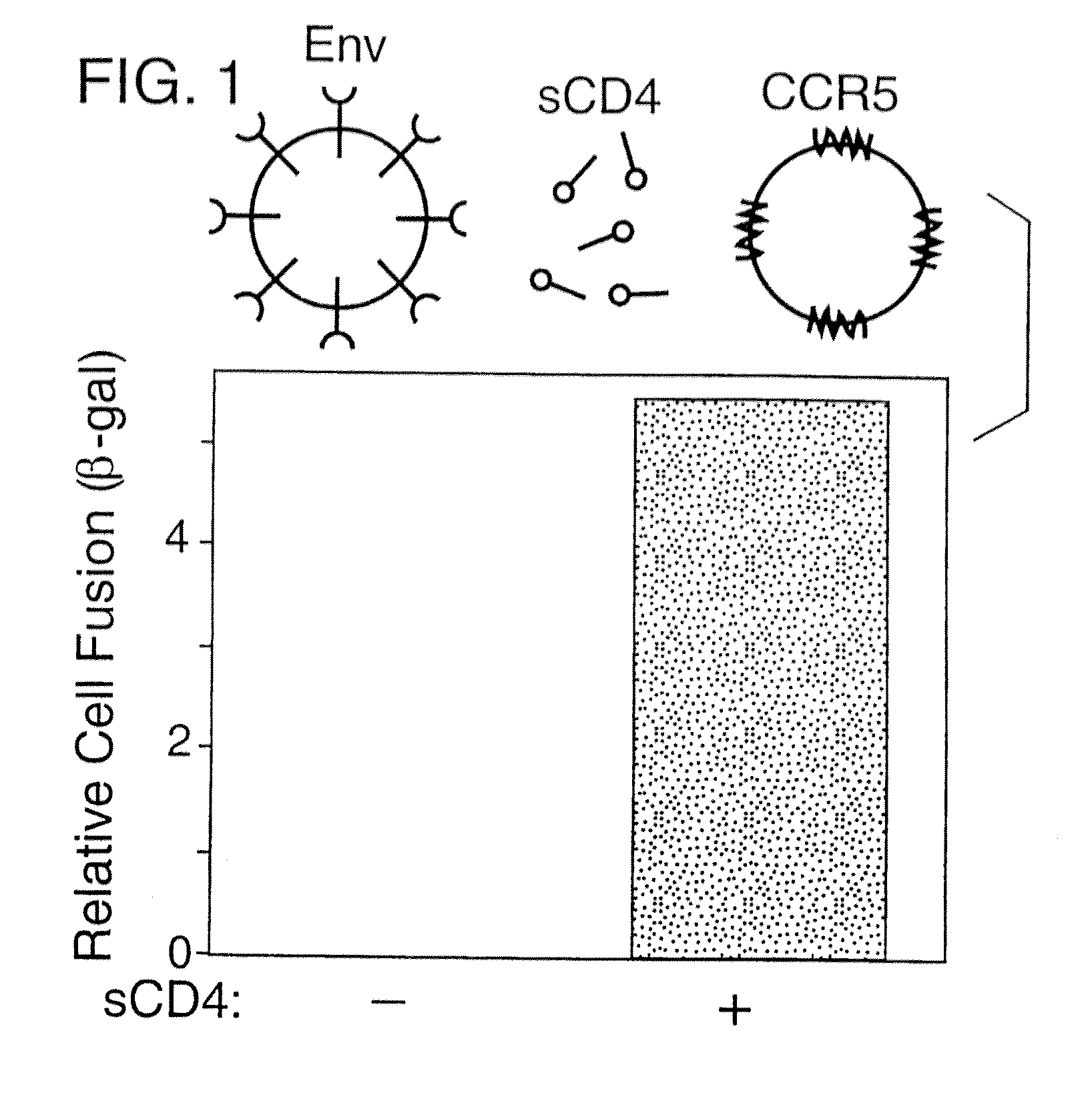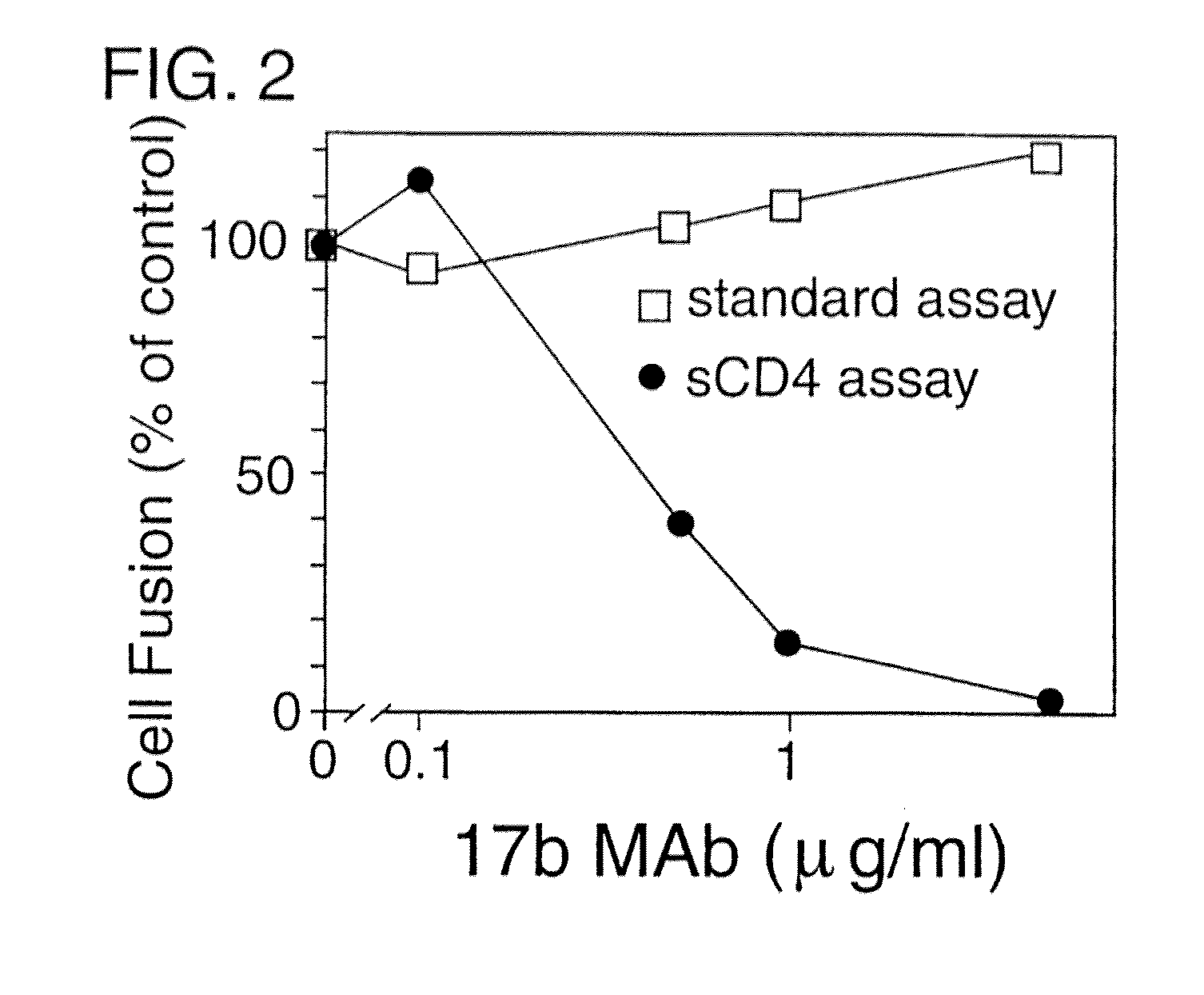Novel chimeric protein for prevention and treatment of HIV infection
a technology of chimeric protein and hiv virus, applied in the field of proteins, can solve the problems of poor targets for clinically protective antibody binding, and achieve the effect of inhibiting and inhibiting hiv virus replication or infectivity
- Summary
- Abstract
- Description
- Claims
- Application Information
AI Technical Summary
Benefits of technology
Problems solved by technology
Method used
Image
Examples
example 1
Construction of a CD4-SCFv(17b) Encoding Sequence
[0170] A gp120-targeted fusion protein, sCD4-SCFv(17b), is constructed by linking the C-terminus of CD4 (D1D2, 183 amino acid residues) to the N-terminus of the heavy chain of the 17b SCFv, which contains the heavy chain at its N-terminus, linked via its C-terminus to the N-terminus of the light chain (see schematic diagram of the construct, FIG. 3). The 17b SCFv DNA was obtained from R. Wyatt and J. Sodroski, Dana Farber Cancer Institute, Boston, Mass. The 17b-MAb producing-hybridoma was obtained from J. Robinson, Tulane University.
[0171] Linkers were chosen to have sufficient length and flexibility to connect the desired protein segments without inducing unacceptable torsion. For the SCFv, the 15 amino acid residue sequence (Gly4Ser)3 (designated L2) was chosen, which has been employed successfully for production of SCFvs. This sequence confers excellent flexibility with minimal aggregation. The linker between the C-terminus of CD...
example 2
Expression and Purification of CD4-SCFv(17b) Fusion Protein
A. Expression
[0178] For small amounts of protein expression, vaccinia expression technology can be used to produce the sCD4-SCFv(17b) (as well as the control 17b SCFv protein). The plasmid containing the construct in the vaccinia expression plasmid pSC59 is used to produce a vaccinia recombinant, using standard technology. For such expression, suitable cells (HeLa, BSC-1, etc.) are infected with the recombinant vaccinia virus; after incubation for 24-36 hours at 37° C., the recombinant protein is present in the culture supernatant. Initial biochemical and functional studies can be done with unfractionated supernatant; where necessary, the sCD4-SCFv protein may be purified (see below). Small scale, initial experiments can be performed with small amounts of material (5-20 micrograms, obtained from 1-5×107 cells). The preparation can be scaled up; for such large-scale production, it may be advantageous to employ higher yield...
example 3
HIV-Envelope Neutralization Measurements
A. Vaccinia-Based Reporter Gene Cell Fusion
[0185] Env-mediated cell fusion activated by CD4 was measured using the vaccinia-based reporter gene assay (Nussbaum et al., J. Virol. 68:5411-5422, 1994). For the experiment shown in Table 2 and FIG. 1, effector cells (HeLa) were transfected with plasmid pG1NT7-β-gal (lacZ linked to T7 promoter), then infected with vaccinia recombinants encoding either the mutant uncleaved Unc Env or the wildtype (WT) SF162 Env (Broder & Berger, Proc. Natl. Acad. Sci., USA 92:9004-9008, 1995). Target cells were created by transfecting NIH 3T3 cells with plasmid pGA9-CKR5, containing the CCR5 cDNA linked to a vaccinia promoter (Alkhatib et al., Science 272:1955-1958, 1996), then infecting these cells with wild type vaccinia virus WR. Target cells also carry and express a bacteriophage T7 RNA polymerase. Prior to fusion assays, transfected cells were incubated overnight at 31° C. to allow expression of recombinant p...
PUM
| Property | Measurement | Unit |
|---|---|---|
| length | aaaaa | aaaaa |
| Tm | aaaaa | aaaaa |
| flexible | aaaaa | aaaaa |
Abstract
Description
Claims
Application Information
 Login to View More
Login to View More - R&D
- Intellectual Property
- Life Sciences
- Materials
- Tech Scout
- Unparalleled Data Quality
- Higher Quality Content
- 60% Fewer Hallucinations
Browse by: Latest US Patents, China's latest patents, Technical Efficacy Thesaurus, Application Domain, Technology Topic, Popular Technical Reports.
© 2025 PatSnap. All rights reserved.Legal|Privacy policy|Modern Slavery Act Transparency Statement|Sitemap|About US| Contact US: help@patsnap.com



